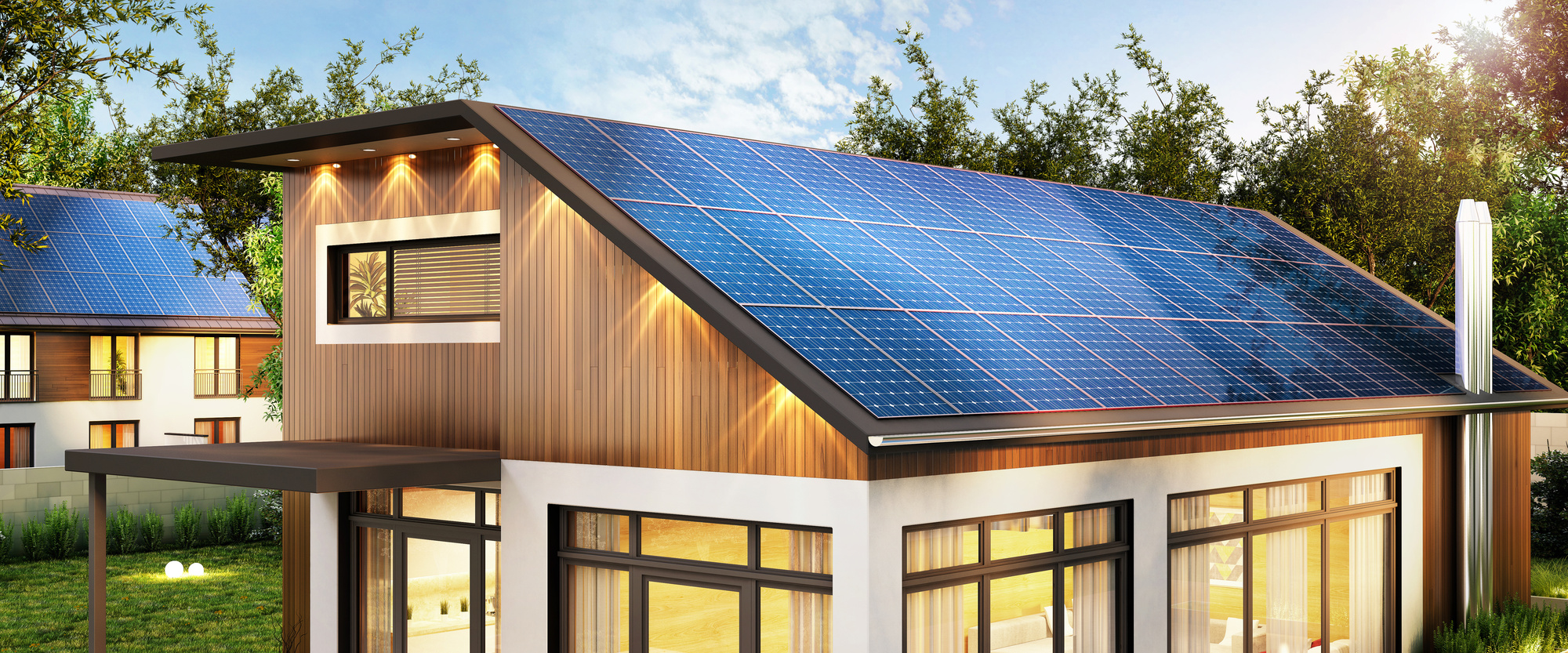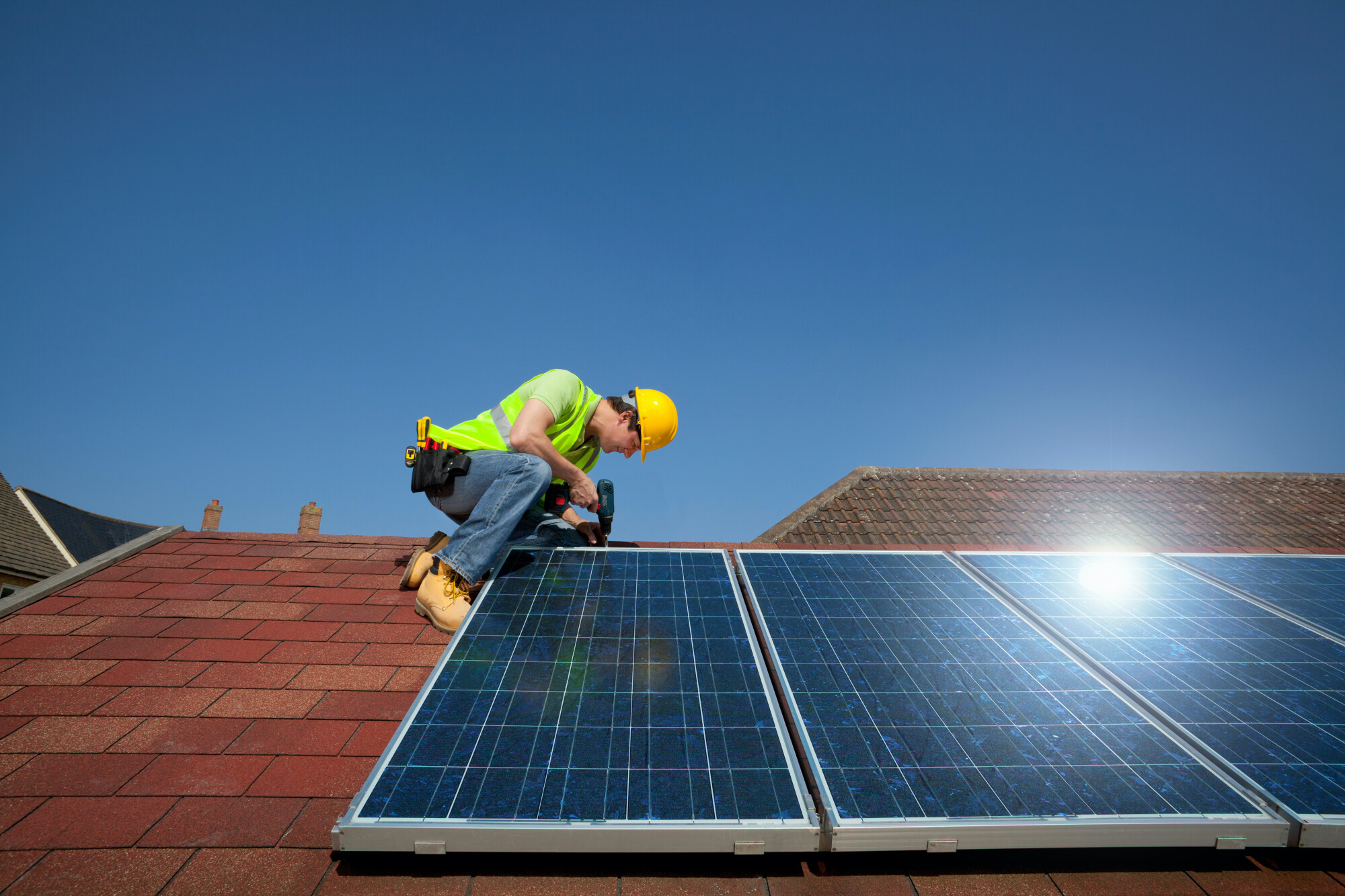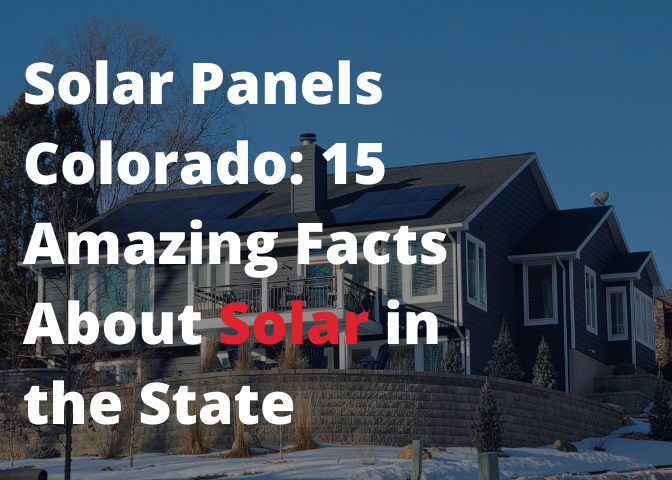What to Know About Solar Panel Installation

So, you think you're ready to make the switch to solar energy. That is a great decision for our planet's future. You are about to contribute to the 160 GW of solar power the industry will add to the grid in the next five years.
Government solar panel incentives have helped you decide to switch, but it's hard to know where to begin. The technology for solar energy can get confusing. The industry is changing so fast it's hard to keep up.
Of course, you want to hire the best company for solar panel installation at your home. But, there's a lot of information to take in first.
Well, you've come to the right place. Keep reading for a better understanding of everything solar panel installation entails. Let's start with an overview of what they are made from and what they cost.
Material Matters
For most home solar panel installations, there are types. Thermal solar panels take the sun's energy to heat water. These panels are solar collectors, and they shouldn't get confused with solar panels.
Thermal panels are great for heating pools and home water supplies. But, they don't generate electric power. Instead, the Pv or photovoltaic panel converts sunlight into electricity.
Costs for solar panels alone vary. So, this part of the initial investment at first looks expensive. Yet, the savings from conventional electricity prices offset that investment in a few years.
It's important to note that so much more goes into the price of solar panel installation. So, next, it's best to have an overview of the rooftop solar installation process.
The Solar Panel Installation Plan
Before discussing a quote, a solar panel installer must first assess your home. Next, several aspects of your home will determine the installation plan. Next, a designer will come to your home to gather every detail for the best installment possible.
Every home is different, so all solar panel installations are customized. For example, the size and shape of your roof will determine the best placement of panels.
Weights and Measures
Direction and angle to the sun factor in calculating power generation. Panels don't need direct sunlight to produce electricity. But, they will get the best results from longer exposure to the sun's light.
The condition and weight capacity of your roof are other considerations. Your roof should have at least the same lifespan as the panels installed. The roof will also have to bear the extra weight that comes with solar panel installation.
Connectivity Counts
The assessor will also look for the best areas for inverters and connections to the power grid. This is not only important to know your electricity output.
You will need the grid to engage for times when the sun is down and not producing energy. Utility companies use a system called net-metering. It is part of your solar panel incentives program.
Also, your local utility company will have to be consulted about your hook-up. Finally, you should ask if there are any fees involved with a solar connection.
Remember, the goal is to reduce your energy costs over time. So, ask the utility people when and how you will be credited back for the extra power your panels generate.
Most homeowners can't go entirely off-grid with their solar panel installations—those who can incur costs for storage batteries. Whichever you choose, the current is still measured from the utility company and current power usage.
Climate Concerns
Other details like water drainage will factor into the design. For example, water may drain differently after installation, which could affect other parts of the property. In addition, there are panel parts that need protection from elements, as does the change to your roof.
Climate plays a large role in deciding panel placement as well. The solar panel installation designer must account for extreme weather conditions. Obstructions like tree branches or daytime shade are also factored into the plan.
The installation designer takes all this into account before preparing your panels. So, you can appreciate the amount of work that goes into planning. Labor percentages average around 30% of the total cost.
The good news is there are solar panel incentives in place to help defray those costs. The federal government offers solar panel tax credits for most buyers.
Credits and Savings
Speaking of tax credits, let's talk about your eligibility for solar panel incentives. Let's begin with the ITC investment tax credit. This incentive is better known as the solar tax credit.
It gives homeowners a deduction of 26% from the cost total cost of a solar panel installation. Bear in mind that this credit applies only to owned solar panel systems. Solar panel leasing programs do not take advantage of this tax credit.
In turn, each state provides solar panel incentives of its own. Check with your state office to find out about your benefit. Note that the federal tax credit is set to expire in a few years.
Now, you are likely wondering how long it will take to break even on your investment. That, of course, depends on the cost of your solar panel installation and the amount of power it generates.
Again, the size of your solar panel installation and the region you are in are both factors. Your credit for supplying power to the grid helps to a point.
But, in blackout situations, you are still victim to the same shutdowns as before. That is unless you go off-grid with battery backup. So, if you live in a region that's susceptible to power outages, you may want to consider battery storage.
That said, it averages about eight years for most homes to reach the break-even mark. But, remember, your electric bill is seeing discounted rates as soon as you connect with solar.
Payment Options
Like all products and services, solar panel installation has a price tag. Happily, prices have come down a lot in the last few years, but significant investment is involved. Your three payment choices are similar to buying a car.
Solar panel technology is improving daily, so what you buy today is likely to last a long time. Even so, choose your options carefully, like you were buying a house.
Cash Sale
Buying is an option that most people try to consider first. If you have home equity, you might consider borrowing against the value of that equity. Interest rates are much cheaper than conventional loans.
The average price of solar panel installation varies, as mentioned. But, think around the $20,000 range as a starting point. Then, if you have the funds on hand, you're well on your way to energy cost savings.
Financing
Solar panel financing works like most other loans. A term and payment arrangement can be made for solar panel financing through lending institutions. Some lenders specialize in solar panel financing.
In addition, some solar panel installment companies have trusted lending agents. In either case, you can start with as little as nothing down. You can often get terms up to twenty years.
Keep in mind that solar panels remain almost maintenance-free and working for a long time. So, when our loan closes out, you will enjoy the benefits of solar power consumption.
At the end of solar panel financing, you are free and clear of any further obligation. All the while, you were paying for a system to own instead of paying the utility rate.
If you are thinking of moving, the panels are yours to use as you please. You have the option to take your solar panels with you to your new home. Of course, they were designed for the first property you had them installed.
It's comforting to know that a solar panel installation raises the value of a home in most cases. So, you may find it best to sell your home with the solar feature intact.
Leasing
Some companies provide solar panel leasing arrangements. However, be aware that leasing solar equipment is like car leases. You don't actually own any of the material.
Instead, you will pay monthly fees to the solar company for the term of the contract. You will also be bound to the conditions of that contract. If you move homes, you may have issues bringing the solar equipment with you.
Solar panel leasing is a risky venture that rarely achieves the intended goal of saving money. Many offers have a 'too good to be true' feel, so be wary. It's best to have reliable counsel read over the contract before signing up for a lease.
Lifespan and Maintenance
There are two questions many people have about the durability of solar panels. First, they want to know how long they last before needing replacing. Second, people ask about maintenance.
Solar panels are much like the appliances in your home. They run well with little or no maintenance. However, any aging appliance will experience some reduced efficiency over time.
At the same time, solar panels will experience a reduction in output over time. But, the newer materials for panels reduce this likelihood for a longer time. A lot depends on the brand of solar panels you buy.
There are products with 5-year warranties and others with 25-year guarantees. Obviously, the cost to buy each is different, but it's not hard to tell which will likely perform longer.
Buy the best quality you can afford. And, once the solar panel installations are complete, the fixtures don't need maintenance. Good solar panels often have over 80% of their efficiency after twenty years.
There are even different quality solar panels for various weather conditions. Also, there are no moving parts on a solar panel installation. Professional installations ensure that the panels stay in place.
Before the Installation
The solar panel designer creates a custom solar plan for your home. With their guidance, you should choose the best components for your property.
The quality of your solar panel is most important. They should be ideal for your specific conditions. But, the panel's performance is only as good as the attached components.
Important Accessories
There are a couple of other parts that are critical to the success of your installation. First, take the time to study different types of inverters. Three types of converters are common to solar panel installation.
The inverter is the part that converts the solar panels' energy from DC to usable AC electricity. Most home installations use string inverters.
They work fine for most home installations as long as there is continuous sunlight. Unfortunately, if areas of the panels get blocked by shade at any time, the inverters can't track each panel's output.
The other two types are microinverters and optimizers. These options are more expensive, but they have qualities the string inverter doesn't. Microinverters and optimizers will monitor each panel for efficiency.
In the case of power interruption, this could determine the ability to root out the issue. Either choice works well. A little further study will help you understand the characteristics of each inverter.
Storage Sense
Another consideration for components is battery storage. Some homeowners will pay for the peace of mind of uninterrupted power to their homes. If you decide on the backup route, explore the different options.
The time it takes to perform a solar panel installation will depend on your choice of components. So, be prepared for the arrival of your installation crew. Of course, you will want to leave them to their work, but a crew foreman is on hand to answer questions.
Enjoy the Solar Difference
Switching to solar electricity is an exciting option for many reasons. Besides the obvious help to our environment, solar panel installation makes good business sense.
The goal of saving energy costs is more in reach than ever before. Solar energy is becoming a dominant fixture for electric power. So, if you are ready to get started on the road to energy savings for your home, give us a call for a consultation.


